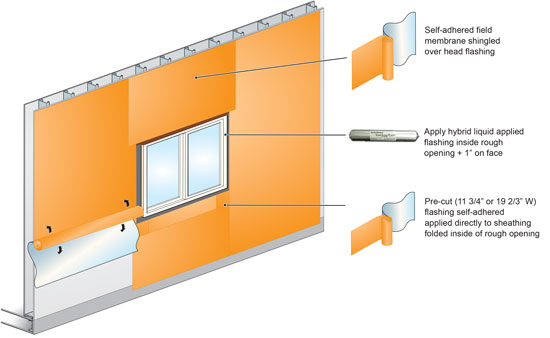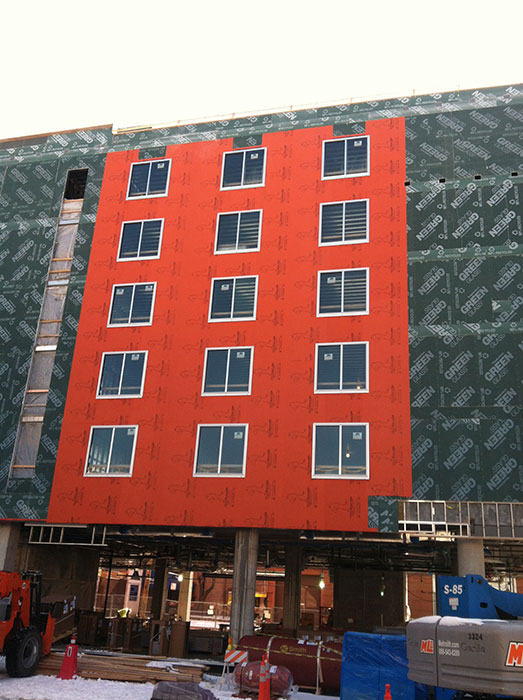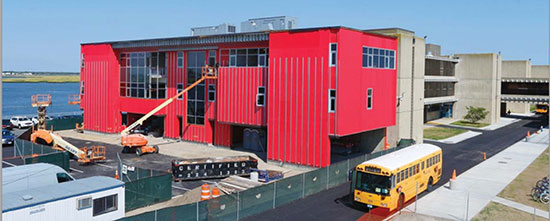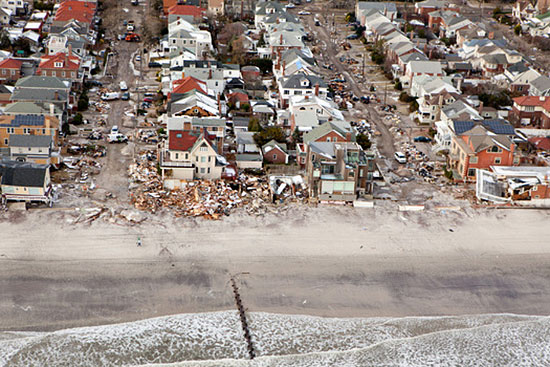Breaking Old Rules for Air-Barrier Installation
History of Building Paper and Weather-Resistive Barriers (WRB) and Air Barriers
While the art and science of elegant, affordable, manageable control of air and heat in buildings is now commonplace and required by codes and standards, it wasn’t always like that.
Homes in the early part of the 1900s were drafty with lap siding and empty stud bays, and were alternately cold or hot, dry or humid, depending on the season and location. The status quo worked for several reasons. We had not yet invented air-conditioning, so we didn’t know that sleeping on the porch in summer was not the only option. We were accustomed to feeling the impact of seasons and weather, even inside the house. The leakiness of the house let heated air escape in winter, which was uncomfortable and costly, but it also ventilated the house, which provided benefits in drying the walls and cleaner indoor air, depending of course on the quality of the outdoor air that was entering.
In time, builders tacked simple kraft paper onto the studs before adding the cladding to stop liquid water entry into the building. The paper could get wet and then dry out, which lessened the chance of mold and rot. Over time, though, season after season, the paper tended to degrade, and that’s when pine tar was added to make the paper more resistant to moisture.
Insulation was not a big issue in the early part of the 1900s. Homes were generally heated with wood or coal-fired furnaces and steam heat, and in cold northern winters, you simply added more wood or coal if you were cold, or opened the windows if you were hot.
The use of tarpaper, saturated by now with a petroleum-based product, was a very popular way to build back in the middle of the last century. However, it was difficult to use in cold weather. The corners could break. Eventually, the product was improved to make it a little more durable. And the main goal was to control water, which it did.
The invention of air-conditioning raised expectations of occupant comfort. Once we experienced the comfort of a cool home during a hot summer, there was no going back.
In the mid-1970s, the oil embargo and energy crisis changed forever how we build, insulate, and ventilate homes. However, the correct changes didn’t come right away, and there were many building and material failures as building scientists, building material manufacturers, builders themselves, and code and standards figured out how to “build tight, ventilate right,” as we often hear today.
Once energy became more expensive, insulation got thicker, and trapped vapor became a major, expensive, and destructive issue.
In the 1970s, modern house wraps came on the market and revolutionized air and moisture barriers. But some problems emerged. The material can rip and tear, both from improper installation using staples and from the forces of wind. Once the integrity of an air barrier is compromised, its value as a protective factor diminishes.
Peel-and-stick membranes with a primer application eventually came on the market. Without the staples and potential tearing that can impact tacked-on barriers, these promised a more thorough attachment. Again, some problems emerged. Typically, primers are needed on sheathing. These often contain VOCs, which the green building movement and health and environmental concerns have made unpopular. Most egregious, primers diminish the perm rating. Joint and corner treatment is often needed, and the installation is time sensitive and weather sensitive.
Fluid-applied air barriers have gotten quite a bit of attention in the design and build industry. Videos showing a smooth and consistent fluid application are compelling. However, there are some issues and drawbacks with this type of product. Rain will wash off the material if not fully cured. Low temperatures restrict curing. Transition membranes need to be included to span gaps as well as lengthy prep time for the substrate. And because it’s a chemical liquid that could potentially harm installer and bystanders, personal protective equipment is needed. Methods must be put into place to contain spills and overspray. Surface preparation can be arduous, with the need to fill holes and gaps before application. And there is a potential for the product to become contaminated with common construction debris and dust.

Illustration courtesy of VaproShield
Self-adhered, water-resistant, vapor-permeable air-barrier sheet membranes that do not require primer are applied directly to the sheathing in a wide variety of weather conditions.
Finally, we come to self-adhered, water-resistant, vapor-permeable air-barrier sheet membranes, which combine the performance necessary to reduce risk and create superior buildings with the ease of installation that lessens the chance it will suffer from installer error, or hold up a job due to weather or sequencing. We’ll talk more about these products in the following sections.












